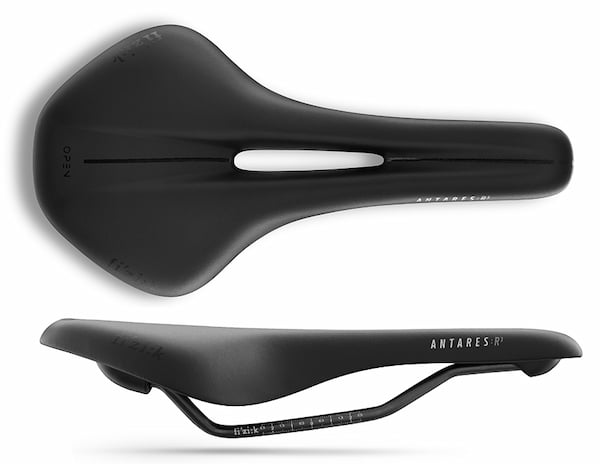This post will explain what materials are used for making bicycle saddles (and padding) and what are their advantages and disadvantages. It is the first in a series of posts that explain how to choose a good fitting saddle. Other posts are explaining: saddle padding, bicycle saddle shape, measuring sit bone width and choosing an optimal bicycle saddle width.
Contents:
- Synthetic saddles with foam (spunge) padding
- Synthetic saddles with gel padding
- Leather saddles
- Concrete saddle recommendations
1. Synthetic saddles with foam (spunge) padding

Picture 1
Saddles with synthetic (artificial) material and foam padding. There are numerous types of synthetic cover and padding materials used, with different attributes, but here are the general characteristics of such saddles:
The advantage of synthetic materials generally is their water resistance – the saddle won’t get soaked in pouring rain or accumulate sweat on long rides. There are perforated synthetic saddles that will take some water, but most of the synthetic ones are “waterproof”.
The advantages of foam padding are light weight and it’s ability to spring back in shape after being compressed – they take a really long time to become compacted from use and loose springyness.
2. Synthetic saddles with gel padding
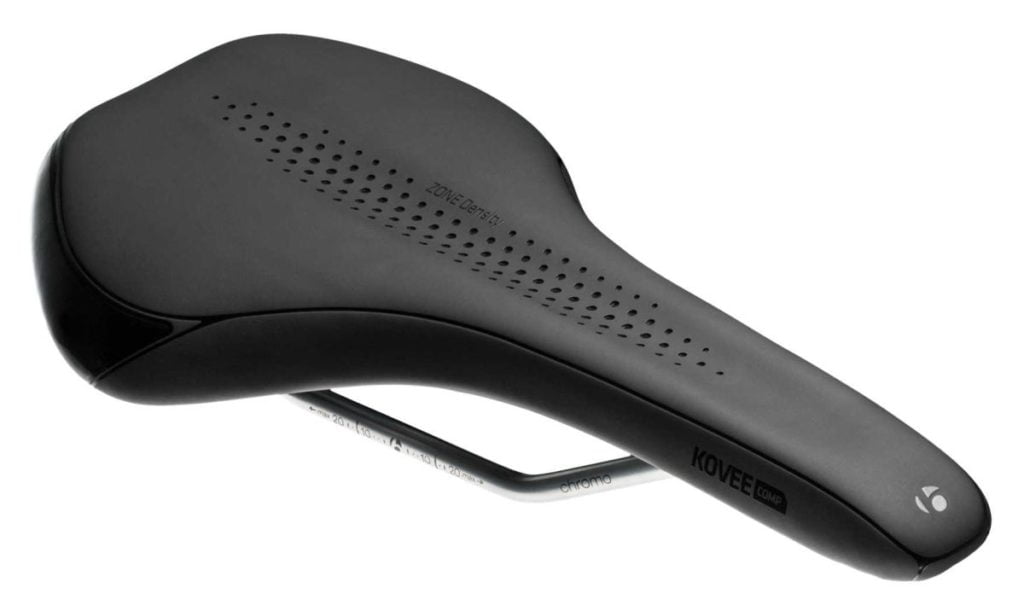
Picture 2
Similar to the previously explained saddles except these saddles have “gel” instead of foam padding. Gel is a nice sounding marketing term, advertised as “new, super-comfortable material”.
Generally it does comform to body shape a bit better than other materials – instantly, without the need for a “break in” period. This is it’s biggest drawback – it relatively quickly becomes compacted, loosing springyness. Other drawback is that gel is a bit heavier than foam.
Gel padded saddles are usually comfortable for beginners, but as the back muscles strengthen and the body gets more accustomed to riding, it often becomes uncomfortable.
3. Leather saddles

Picture 3
These saddles are constructed with leather stretched over a steel frame. They look very elegant, especially on vintage, or retro bicycles.
The advantage of these saddles is the ability of leather to take the shape of the rider’s back – just like leather shoes, they will break in after some use and “fit like a glove”. Leather as a material can also feel more comfortable in the summer, especially if no padded cycling shorts is used when riding. Another advantage: leather saddles (if mantained properly) are among the longest lasting – having the most durable material, resisting cuts and chafing.
The rest is all bad, unfortunately. Leather saddles require maintenance. As the leather stretches, it needs to be compensaded – most quality leather saddles have screws for stretching the metal frame to compensate for leather stretch.
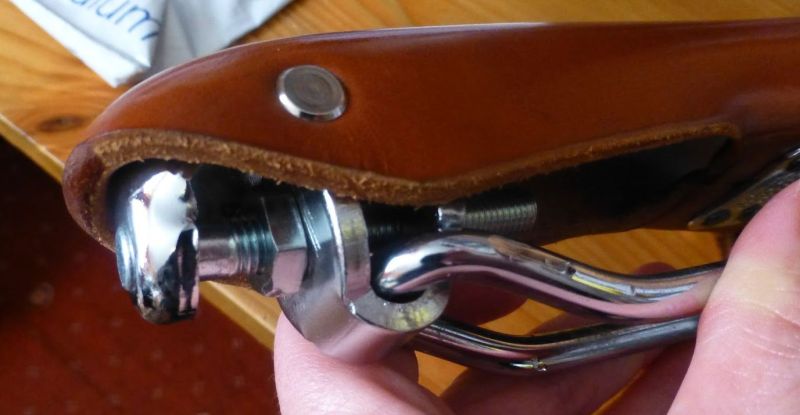
Picture 4
Other disadvantage is not being water resistant. Leather saddle will get soaked in the rain. Then it will feel uncomfortable to sit, and the wet leather will stretch more quickly if ridden before it is dried. So a plastic bag cover when parking in the rain (or even when riding if it’s a downpoor) is recommended.
Also, leather will dry and crack if it is not regularly waxed with leather care products. Worst case scenario is rain soaked, then sun baked – usual summer riding scenario.

Picture 5
Leather feels very cold in the winter. As soon as it gets colder, most riders will need some padding, or thicker shorts/pants at the part where the back contacts the saddle – or it will feel uncomfortably cold.
Finally – because leather is heavy and requires a sturdy steel frame to keep it stretched – leather saddles are by far the heaviest.
The noted advantages and drawbacks should be considered when choosing the optimal saddle material for the intended use(r).
4. Concrete bicycle saddle recommendations
“Which saddle should I buy?” How to find a comfortable saddle?
I recommend that you read the other posts in this series, before buying:
- Bicycle saddle fit [01] Materials they are made of
- Bicycle saddle fit [02] Saddle padding
- Bicycle saddle fit [03] Saddle shape
- Bicycle saddle fit [04] Measuring sit bone width
- Bicycle saddle fit [05] Optimal saddle width
- My bicycle saddle is uncomfortable, what should I do?
However, if it’s of any help, I’ll recommend a few right away – that have worked for me, depending on the type of bicycle and riding. I’ll be using Amazon affiliate links for these, so you can check the prices and availability using one click:
An excellent MTB saddle is Selle Royal model Suez.
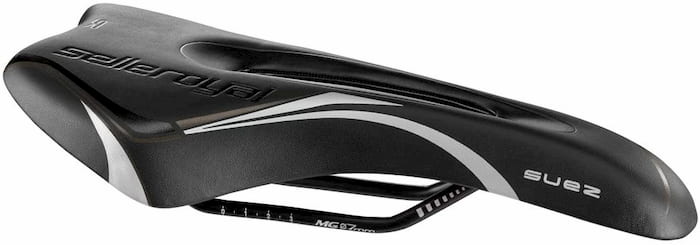
A rather athletic saddle, but its padding is not too hard, so they are comfortable even without the use of padded cycling shorts (bibs) – Amazon affiliate link. It is cut out in the middle, to eliminate any pressure on the “sensitive parts” of both men and women (for the latter claim I’m relying on the feedback I got from female cyclists who have used this model – just look at my pronouns 🙂 ).
An excellent saddle for city bicycles (and all the others with a more upright sitting position), is Brooks model Flyer.
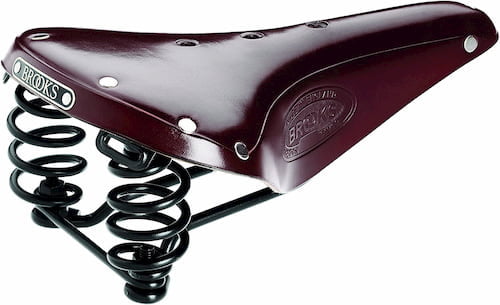
Brooks Flyer is a bit heavier (steel frame, with leather). But thanks to its shape, and the springs at the rear, it is very comfortable, even on extremely long rides (cyclo-touring etc.). Springs are very hard, so you won’t be bouncing when pedalling, but they will absorb any harsh road shocks (bumps, potholes). The leather is great for the summer, but can feel a bit colder in the winter (compared to synthetic materials), and it can get soaked if left in the rain. So I’d avoid this for very wet, or cold climates.
Finally, a road bicycle recommendation – Fizik Antares R3 Open K:IUM Regular black
